All About NFTs
Before we get into the world of NFTs, I want to highlight some of my favorites...
Nyan Cat: Originally posted to the Internet on April 2, 2011 (a historic day if you ask me) by Chris Torres. Sold on Foundation on February 19, 2021 for 300 ETH, or around $587,000 at the time of sale.
CryptoPunk #7804: Sold by Dylan Field, Figma CEO, for 4,200 ETH, or ~$7.5 million on March 10, 2021. He originally purchased in in January 2018. He then sold CryptoPunk #6965 for $1.5 million in February for a profit of $9.5 million (original investment of $39,000).

CryptoPunk #7804
Beeple's "Everydays: The First 5000 Days": Mike Winkelmann (Beeple) only sold art for max $100 until his NFT art sold for $69 million at Christie's, scoring a record for the history books.
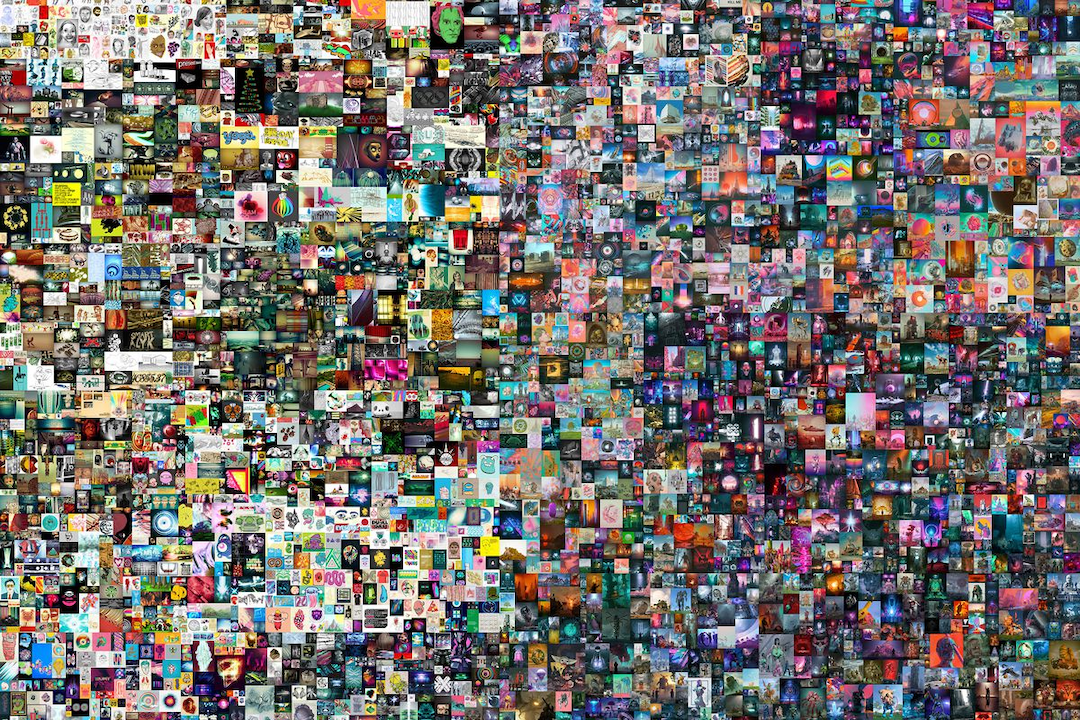
A collage of his work from the very beginning
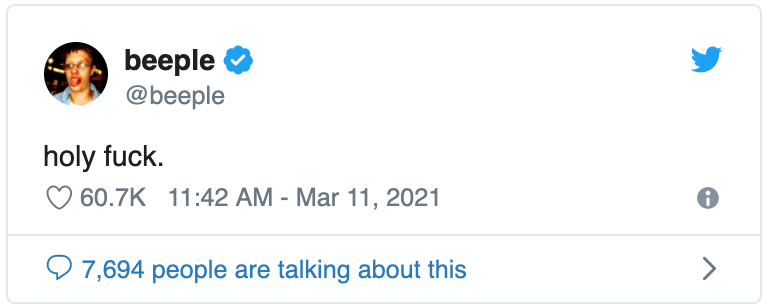
When he himself didn't even believe it lol
Okay now let's get into what is going on behind this!
What is an NFT?
NFT stands for "non-fungible token", and describes digital assets whose data (owner, when it is exchanged, etc.) is stored on a blockchain ledger, usually but not always Ethereum. Because the data is verified with blockchain technology, it guarantees authenticity and ownership. NFTs have 6 important characteristics:
Non-fungible
Fungibility is the ability for an asset to be exchanged or replaced with similar ones. For example, currency is fungible because one $1 bill can always be replaced with another. Hence, because NFTs are non-fungible, they are like certificates of authenticity.
Interoperable
NFTs can move easily across many ecosystems. When 1 project is launched on 1 place, it is viewable in many other wallet providers, is tradeable, and can be displayed in virtual words. In more tech terms, there is a permissioned API for reading and writing the data.
Programmable
One can establish rules for an NFT to follow, such as having certain features of an artwork change upon certain triggers. And it can all be automatic!
Tradeable
Sort of like eBay style, the NFT market is not a closed market but rather an open and free market. Also, it's highly liquid so it is accessible to everyone.
Scarce
You can hard cap NFTs like how the Bitcoin supply is capped and enforce the rules from rule 3 (programmable).
Indestructible and Indivisible
NFTs can't be divided like bitcoin satoshis can, and ownership is immutable.
‣
The Blockchain Innovation Part, For All Who Care [Click the Arrow]
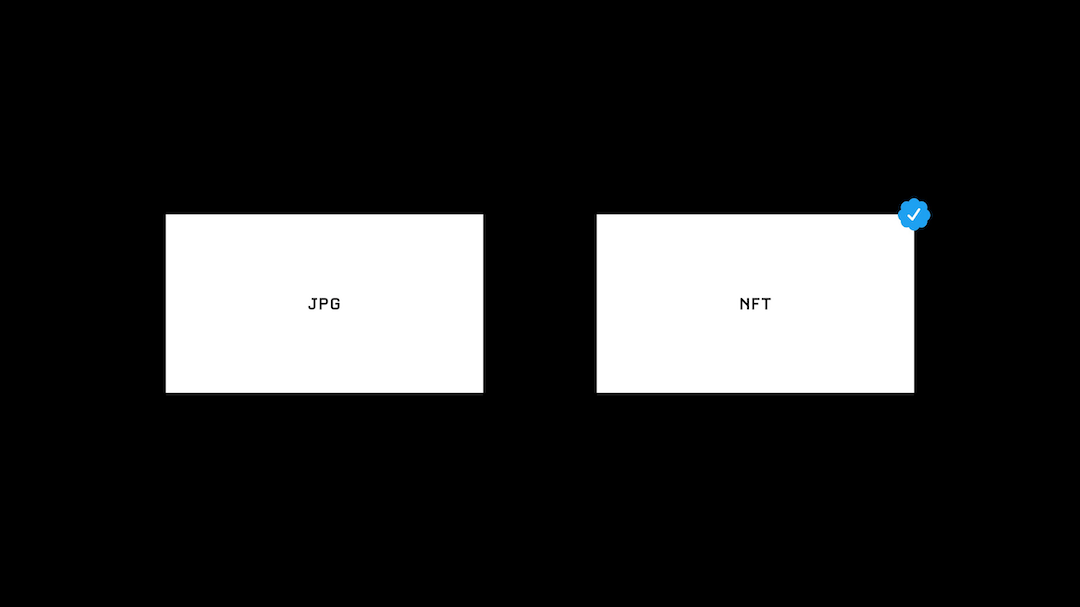
NFTs, Explained - by Jack Butcher. Also an NFT!
Why Do They Exist and Why Do People Care?
NFTs are not the actual digital item but rather a contract that has a link to the file itself. NFTs just authenticate the item... so one can easily say that NFTs lack intrinsic value... which is 100% true. But just like how our dollar bills lack intrinsic value, many buy and trade NFTs are financial instruments. NFTs validate the theory that anything, real or virtual, that is unique and verifiable, can be a place to invest and make returns.
Why would artists want to use NFTs?
Well, perhaps you're a small artist and no one knows you. Why not try out NFTs? Even if you're a bigger artist, perhaps you want to allow a wider audience to access your creations. Above all, what's important is that NFTS are able to be authenticated. Yes, you can take a JPEG of some digital art, but you don't have the blockchain ledger that tells you it is original. As with all items collected from art to sports card, there is a huge premium on original items. Also, that's the same as taking a picture of the Mona Lisa... it's worthless because you don't have the real Mona Lisa.
Also, as NFTs can be programmable, artists can really unleash their creativity. Below is an example.

Micah Johnson, Async Art, "sä-v(ə-)rən-tē"
Micah Johnson's sä-v(ə-)rən-tē has 2 real children before an astronaut. Over the next 11 years, the time-dependent work will see the door, a symbol for their dreams, steadily open until it is fully ajar at adulthood. A QR code will also appear to let donors send bitcoin to secure wallets for the boys, who will get that BTC on their 18th birthdays. That's pretty sick!
Also, artists often can get a percentage of money every time the ownership of their work changes hands aka they can get upside, something that traditional artists often don't get.
Why Would The Rest of Us Buy?
For the same reason you buy and collect art, vintage chairs, sports cards, Elon's tequila, and more. Because you know you're owning a piece of culture, history, and/or something someone you love created. With NFTs, it's like buying equity into an artist or item you love.
The History of NFTs (2017 to Today)
Colored coins were introduced on the Bitcoin network.
Rare Pepes were some of the first!
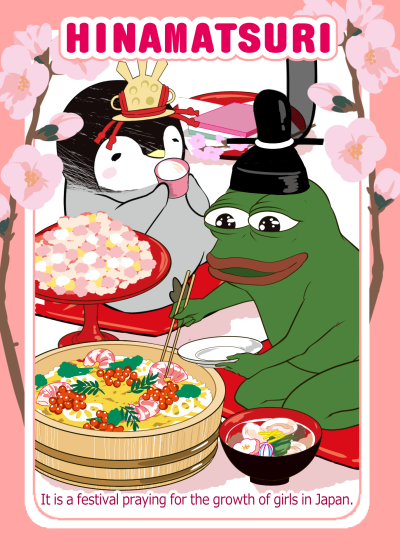
Rare Pepe Directory: Hinamatsuri, March 28, 2018
2. CryptoPunks were the first ETH-based NFT experiment
CryptoPunks is basically a collection of 10,000 unique collectible punks built by Larva Labs. Pre-ERC721 but still interoperable. Below, Alien Punk 2890 was sold for 605 ETH ($761,888 in January 2021). There are 10,000 different CryptoPunks but only 9 Alien ones.

Alien Punk 2890
3. CryptoKitties were born!
First NFT experiment to be mainstream, launched late 2017 at the Ethereum Waterloo Hackathon. Basically just breeding cats together to get rare cats. Technologically, pioneered the dutch auction contract, one of the first price discovery mechanisms for NFTs. CryptoKitties actually crashed Ethereum because processing couldn't keep up. Dragon the CryptoKitty, below, was sold for 600 ETH!

It does look kinda scraggly doesn't it...
4. Entering into 2018: More Layer 2 games build on top of the CryptoKitties smart contract by third party developers such as Kitty Race, etc.
Dapper Labs (behind CryptoKitties) was supportive! CryptoCelebrities also took off which was just a trading platform where you don't want to be caught with the last celebrity. Even Donald Trump sold celebrities for hundreds of thousands of dollars!
5. Rising VC interest
CryptoKitties raised $12 million then $15 million... Rarebits raised $6 million, and Forte raised $100 million with Ripple to start a fund. Axie Infinity and Neon District were created too.
6. The art world finds a natural fit with NFTs
Platforms like SuperRare, MakersPlace, and Rare Art Labs were founded. Artists started creating NFTs to build their own brands.
7. Other genres find use cases too
MLB Crypto was created in April of 2018, and F1 had a collaboration, with a $100,000 sale of a 1-1-1 sold on OpenSea. Virtual worlds were created like Decentraland, and ICOs were raised (quite sizable too, around $10-25 million). Trading volume in NFTs rose a lot! Blizzard even launched their own $5 million card presale, Immutable launched Gods Unchained, and Ethereum Name Service was launched in May 2017, with $170,000 ETH locked up in names.
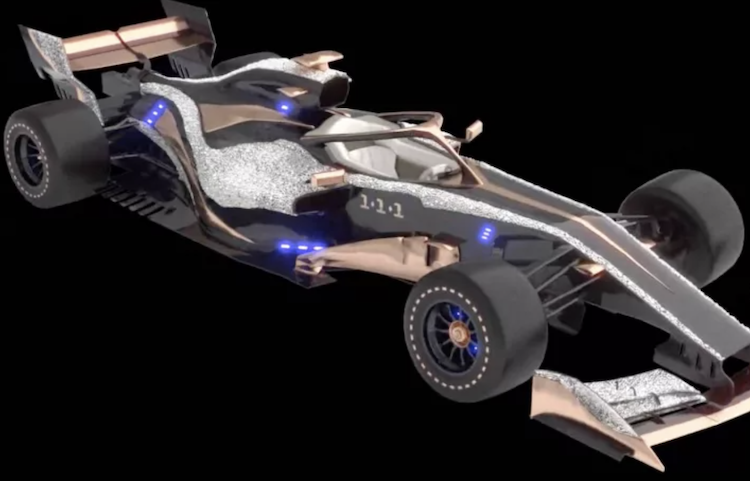
This virtual 1-1-1 F1 Delta time race car sold for 415.9 ETH or $113,000 at the time in May 2019
The Market
The NFT market was just around $41 million in 2018, and as of 3/21/2021, is now $1 billion. On OpenSea, their secondary market reports around $2-3 million USD in volume per month. Since November 2017, there have been a total of $174 million spent on NFTs. The median seller on OpenSea has sold around $72 worth of stuff, but the average seller has sold $1,178 worth... so clearly the power sellers and big accounts are driving growth.
The market is difficult to measure and still relatively small (as it is also difficult to measure the crypto market because where do you stop?) but as you can see from the screenshot below, much activity is due to the recent craze.
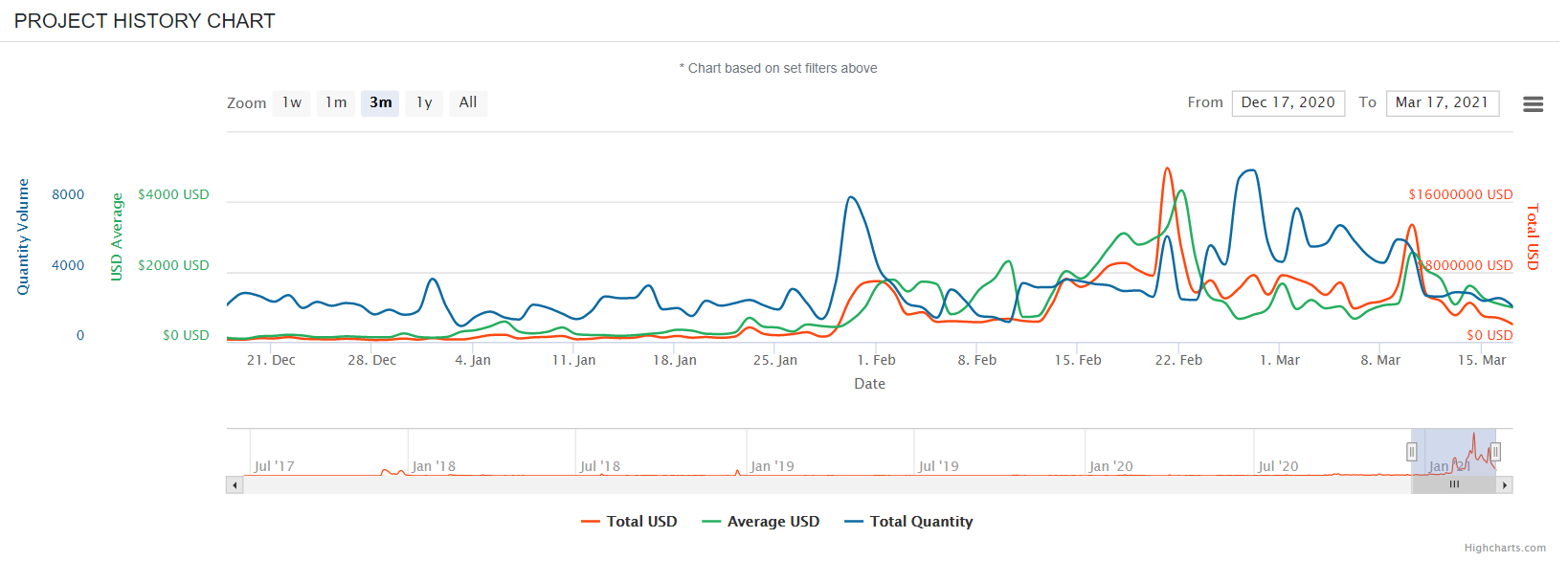
Common Use Cases and Examples of NFTs
Art Marketplaces
Each marketplace has their own aesthetic and set of incentives.
Collectibles
NBA Top Shot - Had $338 million in sales from October 2020 to mid March 2021!
CryptoKitties - first NFT project to go viral in 2017 (will go more into depth later)
SoRare - Fantasy football digital player cards
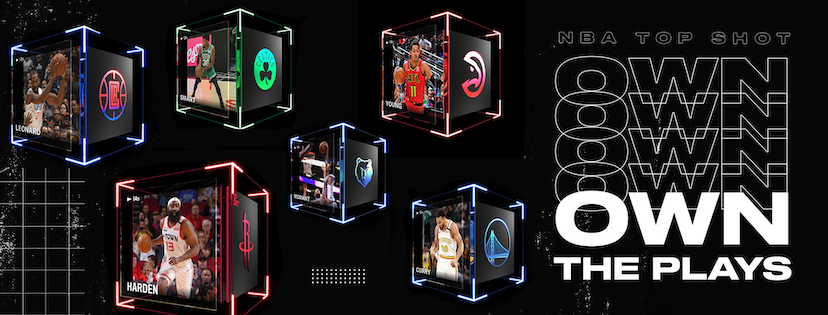
NBA Top Shot
Trading
OpenSea - probably the most used NFT trading platform
Mintbase - covers more niche categories like news and tickets
TokenTrove - known for trading Gods Unchained, Cryptovoxels, etc.
Data
Games
Hearthstone - created by Blizzard, had 100 million+ players in 2018
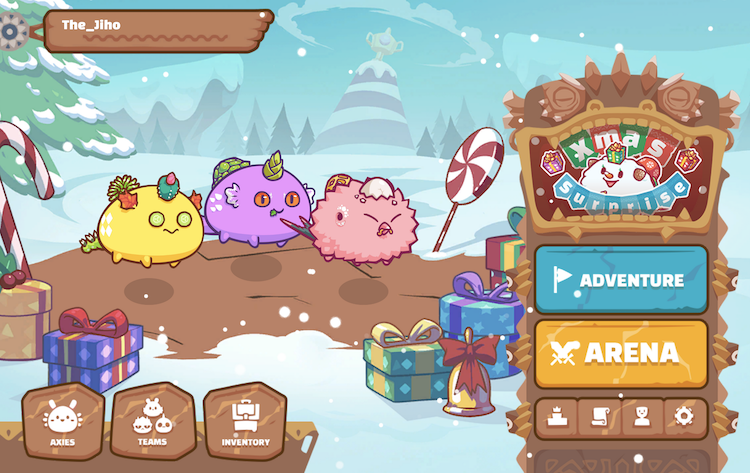
Axie Infinity
Virtual Worlds
Decentraland - you can buy and sell land, build houses, etc. I used this and it nearly burned my computer down but it is the first blockchain-based virtual to raise capital!!!
Cryptovoxels - like blockchain Minecraft
The Sandbox - a game that is soon to be released
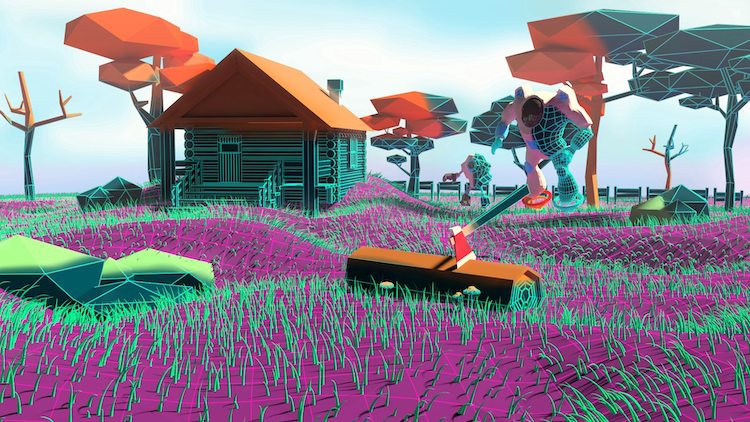
Decentraland
Other
Ethereum Name Service - launched May 2017, had $170,000 in ETH locked from 2017-2018 in names. Think of it like Name Cheap
Video footage
Tokenizing future income (e.g. funding a move to SF for your career nd giving investors a share of future income)
Tokenizing Time
Also used for borrowing and lending, or using as collateral to take out loans
Writing and Tokenized Essays
Mirror.xyz - User-owned, crypto-based publishing platform.
John Palmer raise almost 10 ETH for his called "Scissor Labels"
The Generalist raised 20 ETH for "The Paradoxes of Coinbase"
💡
I am personally super interested in seeing how tokenized, crowdfunded equity writings will revolutionize the journalism industry, especially in light of how big Substack has become!
Main Concerns
Main concerns surround the legitimacy of NFTs, how much of a "hype" they are, if there are many ulterior motives involved, or how to prevent people from selling artists' work as their own. A lot of these responsibilities will need to be resolved by the leading platforms such as Open Sea, who just raised $23 million in funding from Andreesen Horowitz.
The ridiculously high prices are mostly driven by the general crypto hype cycle right now but as more wealth is generated by cryptocurrency, and cryptocurrency itself survives a macroeconomic downturn, people will start to view it in a more legitimate light and use crypto products as investment vehicles confidently.
The Environmental Impact of NFTs
I feel the need to again highlight the environmental impact because it is just super important to understand that a lot of our innovation today come's at a rather high cost, usually that of Mother Earth. Joanie Lemercier, a French artist, was surprised to find that his NFTs had used more electricity in one day than he had for the last two years.
NFTs are often sold in marketplaces tied to ETH like Nifty Gateway or SuperRare. Ethereum uses proof-of-work, which uses a LOT of energy. Proof-of-work is power-hungry because the system forces miners to solve crazy puzzles in order to keep the system secure and reward miners with tokens or transaction fees. The system is inefficient on purpose so that it is harder to just mess up the entire ledger because you need a lot of energy and money. Overall, the ETH ecosystem uses enough energy yearly to power the nation of Panama, and each ETH transaction could probably buy you a nice lunch.
Are NFTs singlehandedly destroying more of the world via greenhouse emissions? It's hard to say. Because the market is still rather small right now relative to the broader Ethereum ecosystem and broader crypto market, one could say that it is not. On the other side of the same coin, it definitely isn't helping the cause either.
To be honest there are no good solutions thus far except some websites that offer a percentage of sales to a sustainability fund... Ethereum has been trying to switch to proof-of-stake (called Casper), another verification method that uses significantly less energy, but it has yet to convert. Scaling in general is still an unsolved problem in the world of crypto. Other solutions include building layers on top of the existing blockchain to have transactions happen "off-chain" and thus away from the proof-of-work process. Existing initiatives and companies include the Lightning Network, launched in 2018 as a faster second layer. Who knows what the future will bring, but this problem is huge and important to bring up as we don't want to destroy our own Mother Earth just to scrape quick profits from digital media.
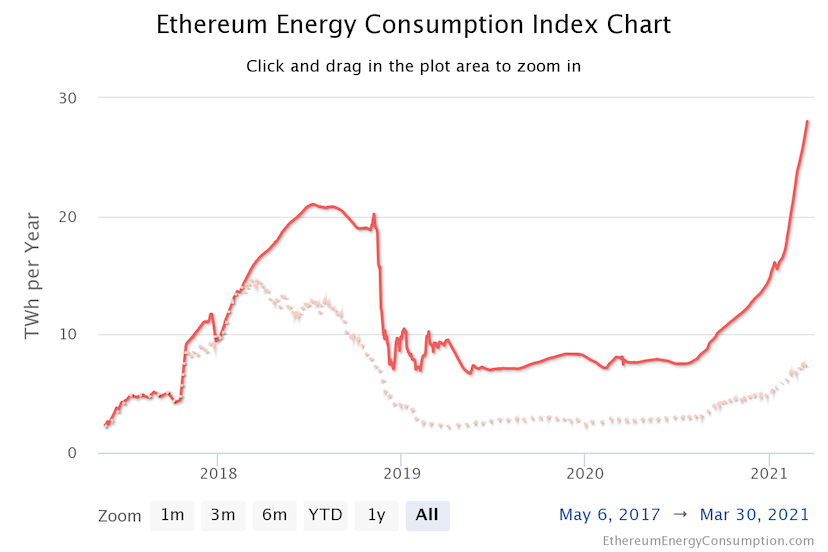
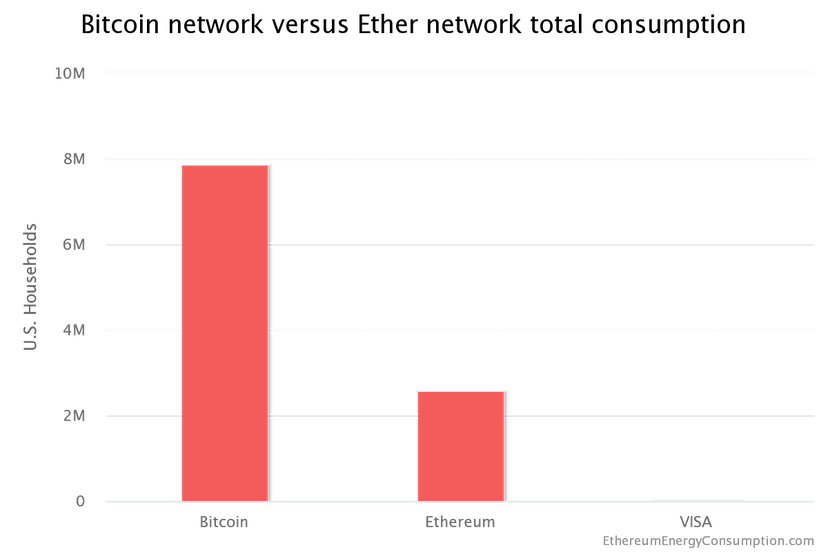
This Still Makes No Sense... NFTs Will Die Out Soon When The Bubble Pops!
Valid, but crypto bubbles have grown and popped, and is still definitely around and popular. As Andreessen Horowitz said, many great inventions come from things that look like toys (the internet, etc.). Wouldn't really ever discount things that seem too outlandish... they could very well be mainstream in our lives in the coming years.
Also, SPACs have been really popular recently, and to be honest, most of them are definitely bullshit as many merge with companies that literally never made money yet the deals are worth billions (??). In my (non-investment) opinion, a product of irrational exuberance, but nonetheless a legitimate investment vehicle, and interesting to ponder when consider the future of investing... and back to the topic at hand, the future of digital assets.
The Future of NFTs
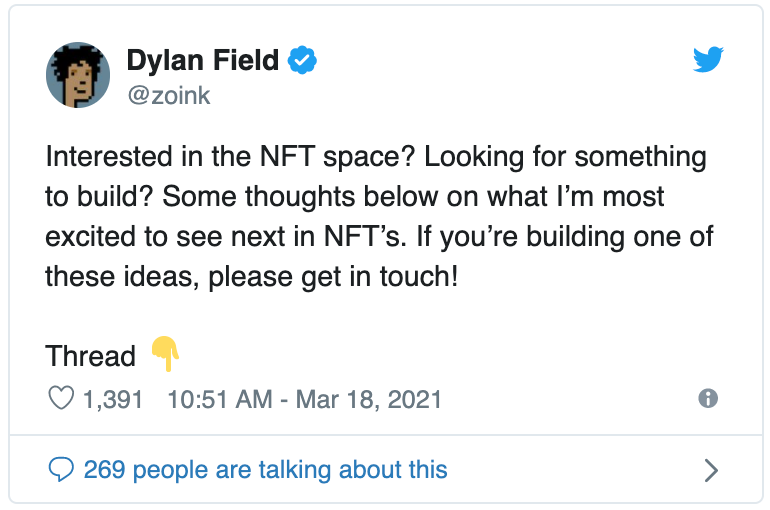
Dylan Field is Figma's CEO, purchaser of CryptoPunks, remember? 😇
Summary of Dylan's Tweet:
Community as Art
NFTs as productive assets e.g. music royalties
Fractionalization, especially in the context of DAOs
Proof of fandom (especially in our creator economy today, as NFTs offer fundamentally better economics for creators)
Rise of the everyday (plebs like us making a name for ourselves)
